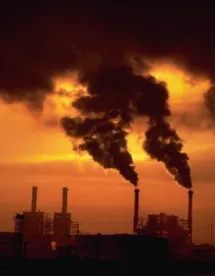The Pakootas decision appears to be the first in which any federal court has directly addressed this issue.
On December 31, 2014, in a case of first impression, Judge Lonny Suko of the U.S. District Court for the Eastern District of Washington concluded that air emissions that contain hazardous substances alone are not considered “disposals” under the Comprehensive Environmental Response, Compensation, and Liability Act (CERCLA), but if these substances later settle onto land or water, they have been “disposed” of at a “facility,” thereby creating “arranger” liability.[1]
Background
Joseph Pakootas (Pakootas) and the State of Washington (collectively, the plaintiffs) initiated suit against Teck Cominco Metals, Ltd. (Teck) under CERCLA, seeking to recover response costs and natural resource damages for Teck’s contamination of Washington’s Upper Columbia River Basin (UCRB) from its lead-zinc smelter. Although Teck’s smelter is in Canada (Trail, British Columbia), hazardous substances from Teck’s slag and effluent were discharged into the Columbia River, crossed the national border, and eventually came to rest in the UCRB, all of which Teck had stipulated to in an earlier phase of the case. Nevertheless, Teck argued that it was not responsible as an “arranger” under CERCLA Section 107(a).
Judge Suko had earlier denied Teck’s motion to strike or dismiss, but Teck moved for reconsideration based on the U.S. Court of Appeals for the Ninth Circuit’s August 2014 decision in Center for Community Action & Environmental Justice v. BNSF Railway (CCAEJ).[2] In that case, the Ninth Circuit held that air emissions do not constitute a “disposal” under the Resource Conservation and Recovery Act (RCRA)[3] because, as the definition is written, it does not specifically include “emitting,” and instead “includes only conduct that results in the placement of solid waste ‘into or on any land or water.’ That placement, in turn, must be ‘so that such solid waste . . . may enter the environment or be emitted into the air, or discharged into any waters.’ . . . [T]herefore ‘disposal’ occurs where the solid waste is first placed ‘into or on any land or water’ and is thereafter‘emitted into the air.’”[4] The Ninth Circuit’s decision meant that the plaintiff’s allegations of harm from inhaling airborne emissions of solid waste particulates from the defendant’s diesel engines could not create RCRA liability.
Teck argued that because CERCLA borrows the definition of “disposal” from RCRA, CCAEJ controlled and Teck’s air emissions from its smelter likewise could not constitute “disposals” under CERCLA. Judge Suko rejected this argument by distinguishing Pakootas as a CERCLA case, whereas CCAEJ had been an RCRA case (which made “no mention of CERCLA”).[5] Because Pakootas involved CERCLA, Judge Suko found reliance on CCAEJ alone was insufficient, and an analysis of arranger liability was required. He determined that Teck’s “CERCLA disposal” isnot the discharge of hazardous substances directly into the air, “because what gives rise to arranger liability under the plain terms of 42 U.S.C. § 9607(a)(3) is ‘disposal . . . of hazardous substances . . . at any facility . . . from which there is a release . . . of a hazardous substance . . . .’”[6]Further, the “facility” is not the smelter in Trail, British Columbia, but rather,
[t]he “facility” is the UCR Site. “Facility” is a term of art under CERCLA, defined at 42 U.S.C. § 9601(9) as “any site or area where a hazardous substance has been deposited, stored, disposed of, or placed, or otherwise come to be located . . . .” (emphasis added). Liability under RCRA, on the other hand, does not depend on there being a disposal at a “facility.”[7]
Although Judge Suko felt that his decision was consistent with CCAEJ, he also recognized that no federal court had previously “addressed this issue head-on.”[8] Realizing the import of his decision, Judge Suko immediately certified the matter for interlocutory appeal to the Ninth Circuit. As of the date of this writing, the Ninth Circuit has not indicated whether it will hear the interlocutory appeal.
Impact
This ruling potentially has far-reaching implications if its reasoning is adopted by other courts because it expands the reach of “arranger” liability under CERCLA to include air emissions that contain hazardous substances. Because CERCLA is such a broadly remedial statute with few exemptions, the decision could expand the universe of entities subject to arranger liability under CERCLA and/or provide an additional basis for holding companies with both air emissions and direct discharges to land or water liable under CERCLA.
[1]. Pakootas v. Teck Cominco Metals, Ltd., No. CV-04-256-LRS, 2014 WL 7408399 (E.D. Wash. Dec. 31, 2014).
[2]. 764 F.3d 1019 (9th Cir. 2014).
[3]. Under RCRA, “disposal” is defined as “[T]he discharge, deposit, injection, dumping, spilling, leaking, or placing of any solid waste or hazardous waste into or on any land or water so that such solid waste or hazardous waste or any constituent thereof may enter the environment or be emitted into the air or discharged into any waters, including ground waters” 42 U.S.C. § 6903(3).
[4]. Id. at 1024 (internal citations omitted).
[5]. 2014 WL 7408399, at *1.
[6]. Id. at *2.
[7]. Id.
[8]. Id. at *4.




 />i
/>i

